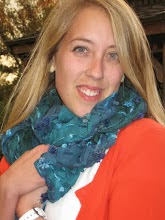It's finally summer and I finally have a moment to update my blogging space! I apologize for the crickets around here but it's been a hectic time and I wanted to wait until I could devote a little extra time to write some quality posts.
Even though school's been over for two weeks now, I am just now getting around to organizing my materials from the end of the school year. I can't be the only one out there! As I'm filing things in my folders and squaring away lesson plans for future reference, I was looking through the materials I used for state test prep. One of the things I tried to focus on as I got my students ready for testing was using all of my experiences to keep it from being a boring, fact recalling, sitting on our bottoms three weeks. That meant creating hands-on activities that were engaging but provided multiple opportunities for reviewing the concepts that were going to be on the test. For reading comprehension and writing tasks, I tried to keep us out of our seats and engaged with partner work and thematic writing based on what my students enjoyed. For math, I added a little more engagement through group work and manipulatives. While keeping my kids using their minds and higher level thinking skills to review day in and day out was a challenge, it also produced one of my favorite lessons.
I guess you could call this lesson "A Trip to the Grocery Store." The first half of the school year I was a leave replacement teacher in a kindergarten classroom. One of the guiding principles of early childhood education is allowing students to explore their world through imagination in hands-on activities. I loved to watch my students, both boys and girls, "cooking" and serving dinner in the play kitchen area of our classroom. Watching my third graders, who are old enough to sit three hours a day for a standardized test but still play make believe games on the playground at recess, I decided that bringing that same principle of using play to grow our minds would work for them as well.
I spent my prep period creating a mock grocery store in our classroom. There was a dairy section, a butcher's station, an aisle for spices and an aisle for baking needs. Some areas had props which meant weeks of saving containers from the recycling or trash. Items had prices that were based on measurements, i.e. one tablespoon of salt is equal to three cents. When students came back for our math block, they were given a recipe for a part of a meal and they had to find the ingredients, find the price, and determine how much this meal was going to cost them to make. The goal of this whole exercise was to review word problems of multiples and money.
There were two great things about this lesson: it allowed for a lot of differentiation and small group work and it kept the kids moving instead of sitting at their desk working off a piece of paper. I chose recipes based on the strength of students math skills so my kids with higher math abilities worked on a problem that asked them to think about multiplying by a half while my kids who struggle with this type of thinking could work with me and see what we needed to do. I watched them rush around the room and one little girl even asked if she could do another one since it was so much fun to go shopping. And when I assessed them the next day with a review test with a similar money and quantity problem on there, almost every kid got it right. You're never too old to get down and dirty with hands-on learning.




No comments:
Post a Comment